Gazing up at the stars in the night sky has been a favorite pastime for people throughout the ages. Some people have taken stargazing to an extreme and made it their life’s work. Here is a list of some of those people who have made significant contributions to the field of astronomy to help give us all a better understanding of the heavens and beyond.
Early Astronomers
 |
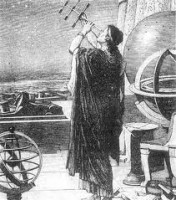 |
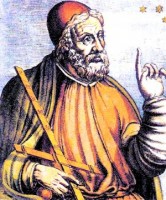 |
| Aristarchus of Samos (c.310 BC- c.230 BC) Nationality: Greek Known for: Developed first heliocentric model of the universe Aristarchus of Samos tried calculating the distance between th earth and the moon. While his calculations were incorrect, later astronomers used his data and methods to arrive at more accurate calculations. |
Hipparchus (c.190 BC-c.120 BC) Nationality: Greek Known for: Created a system for predicting solar eclipses Studied the motion of the moon and produced a catalog system of 850 stars. He also discovered the precession of the equinoxes based on the steady revolution of the earth. He also studied a solar eclipse to help him determine the distance from the earth to the moon. |
Ptolemy (c.90-c.168) Nationality: Greco-Roman Known for: Ptolemaic Model of the universe Presented the Amalgest, which included his geocentric model of the universe. His model put the earth at the center of the universe with everything revolving around it. It was almost universally accepted until the scientific revolution. |
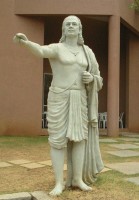 |
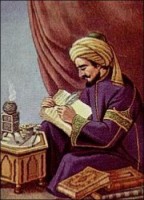 |
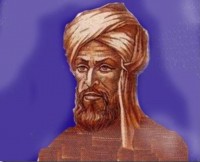 |
| Aryabhata (476-550) Nationality: Indian Known for: First astronomer to theorize the heliocentric model of the universe Aryabhata was one of the first astronomers to theorize the the earth was round. He also believed that it rotated on its own axis and this was the reason for night and day. Further, he believed the moon was illuminated by the sun. |
Al-Kindi (c.801-c.873) Nationality: Arab Known for: Wrote several treatises about the stars and planets Also known as Alkindus, Al-Kindi wrote more than 15 books on the topic of astronomy. He believed in a geocentric model of the universe, but he theorized that the circular orbit of the planets was their divine obedience to God. |
Bhaskara (1114-1185) Nationality: Indian Known for: Closely estimated the time for the earth to travel around the sun Bhaskara wrote Siddhanta Shiromani, a book that explored the planets and earth. It consisted of 25 chapters with each chapter exploring an individual topic, such as the longitudes and latitudes of the planets, planetary motions, astronomical tools and more. |
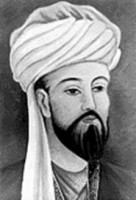 |
||
| Nasir al-Din al-Tusi (1201-1274) Nationality: Persian Known for: Created a planetary movement model that was the most advanced of his time Tusi theorized that the Milky Way was made up of many tight clusters of faint stars which gave the galaxy a “milky” appearance. Nearly 400 years later, Galileo observed through a telescope that the galaxy was made up of tight clusters of stars. |
Astronomers of the 16th and 17th Centuries
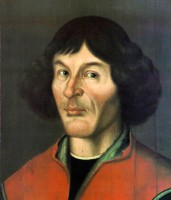 |
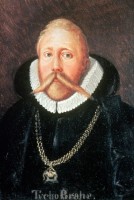 |
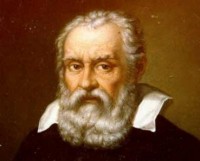 |
| Nicolaus Copernicus (1473-1543) Nationality: Polish Known for: Heliocentric model of the universe Renaissance astronomer who theorized that the sun was the center of the universe rather than the earth. He also stated that the moon revolved around the earth’s orbit rather than the sun’s. |
Tycho Brahe (1546-1601) Nationality: Danish Known for: Created the Tychonic system Created a model of the universe which combined ideas from Copernicus and the geocentric model. He is described as one of the last astronomers to use the naked eye for making their observations rather than a telescope. |
Galileo Galilei (1564-1642) Nationality: Italian Known for: Father of Modern Observational Astronomy Galileo made significant improvements to the telescope for more effective observations of the planets. He confirmed the phases of Venus, analyzed sunspots, and discovered Jupiter’s four satellites. |
 |
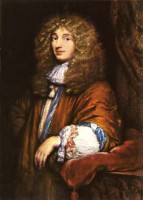 |
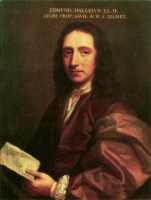 |
| Johannes Kepler (1571-1630) Nationality: German Known for: Explained planetary motion and founded celestial mechanics Played a major role in the Scientific Revolution throughout the 17th century. Kepler explained the orbits and rotations of the planets which came to be known as Kepler’s Laws. He was also the first to explain how the moon affects ocean tides. |
Christiaan Huygens (1629-1695) Nationality: Dutch Known for: Discovered Titan, the first moon of Saturn to be observed Using a telescope that he designed, Huygens observed the ring of Saturn and its elliptical shape. He was also the first to observe the Orion Nebula, which is located in the Orion constellation. |
Edmund Halley (1656-1742) Nationality: English Known for: Studying and predicting the orbit of comets Halley spent 18 years studying the revolution of the moon and its revolutions. He also published Synopsis on Cometary Astronomy, which explained how comets have an elliptical orbit around the sun. |
Astronomers of the 18th and 19th Centuries
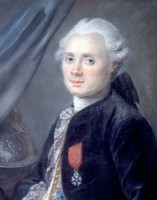 |
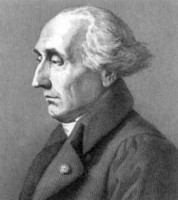 |
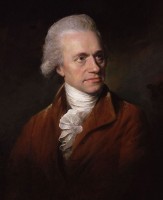 |
| Charles Messier (1730-1817) Nationality: French Known for: Organized a cataloging system of nebulae and stars Discovered more than a dozen comets and observed many others, including the return of Halley’s Comet. His Messier Catalogue organized many objects in the sky into a system that is still used by astronomers today. |
Joseph-Louis Lagrange (1736-1813) Nationality: Italian Known for: Lagrangian Points Lagrange was an astronomer who worked to solve several questions, including why one side of the moon always showed towards the earth and how to determine the orbit of a comet, among other things. |
William Herschel (1738-1822) Nationality: German Known for: Discovered Uranus Herschel discovered two moons of Saturn – Enceladus and Mimas. He also discovered the planet Uranus along with possible rings around it and two of its moons, which were later named Oberon and Titania by his son. |
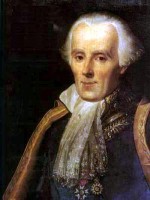 |
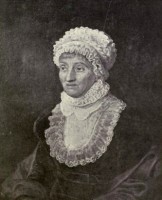 |
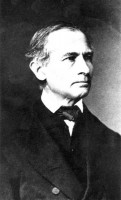 |
| Pierre-Simon Laplace (1749-1827) Nationality: French Known for: One of the first astronomers to discuss the possibility of black holes LaPlace is often referred to as the French Isaac Newton because of his contributions to science, specifically astronomy. He presented the theory of gravitations collapse and wrote a five-volume work entitled Celestial Mechanics. |
Caroline Herschel (1750-1848) Nationality: German-British Known for: Discovered several comets, including the rediscovery of Comet Encke Worked extensively with her husband, William, on astronomical observations. She was awarded the Gold Medal by the Royal Astronomical Society in 1828. She was one of the first honorary members of the organization, too. |
Johann Gottfried Galle (1812-1910) Nationality: German Known for: First astronomer to observe Neptune Worked at the Berlin Observatory for many years and discovered the planet Neptune, a dark ring of Saturn, and three previously undiscovered comets. Also became the director of the Breslau Observatory for more than 40 years. |
Astronomers of the Modern Period
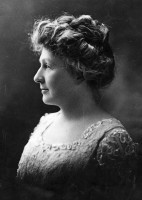 |
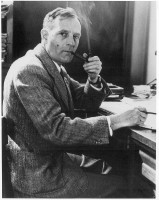 |
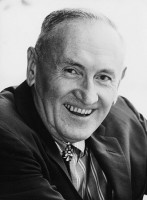 |
| Annie Jump Cannon (1863-1941) Nationality: American Known for: Helped Create the Harvard Classification Scheme Received the nickname “Census Taker of the Sky” because she classified more stars than anybody else before her – more than 230,000 of them. She was the first female elected as an office of the American Astronomical Society and she has a lunar crater named after her. |
Edwin Hubble (1889-1953) Nationality: American Known for: Created Hubble’s Law Discovered that the universe is ever-expanding and that there were more galaxies besides the Milky Way. Hubble also organized galaxies into three classes – spirals, ellipticals, and irregulars. |
Fritz Zwicky (1898-1974) Nationality: Swiss Known for: Helped coin the term “supernova” Zwicky studied nearby galaxies extensively to search for supernovas. In just four years, he found 18 of them. Before his work, only about 12 supernovas had been found in the history of astronomy. |
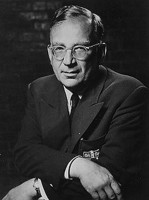 |
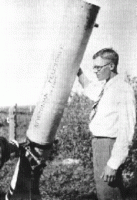 |
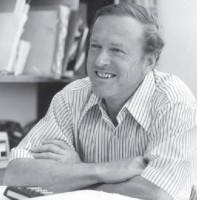 |
| George Gamow (1904-1968) Nationality: Russian Known for: Revised and explained the Big Bang Theory of the universe Co-authored a publication entitled The Origin of Chemical Elements with Ralph Alpher. It explained how current levels of helium and hydrogen in the cosmos could be the result of the reactions that occurred during the Big Bang. |
Clyde Tombaugh (1906-1997) Nationality: American Known for: Discoverd Pluto in 1930 Tombaugh discovered hundreds of asteroids during his career as an astronomer. He also discovered other cosmology phenomenon, including galaxy clusters, variable stars, and superclusers. |
Thomas Gold (1920-2004) Nationality: Austrian Known for: Helped create the Steady State theory of the universe Coined the term “magnetosphere,” which refers to a planet or object controlling particles by way of magnetic fields. He also suggested a theory in which life on earth is the result of “waste products” being dumped on the planet by ETs. |
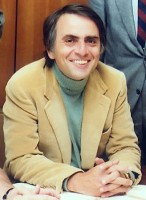 |
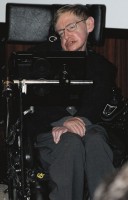 |
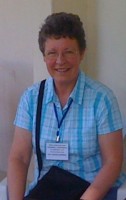 |
| Carl Sagan (1934-1996) Nationality: American Known for: Theorized that Mars is the “dusty planet” Cofounder of the Planetary Society, which encourages the study of the universe. He has also written several books as well as Contact, which was turned into a major motion picture. |
Stephen Hawking (1942- ) Nationality: American Known for: Works with black holes and gravitational studies Hawking is a scientist and astronomer who has published bestselling books about his theories and findings. A Brief History of Time (1988) stayed on the bestseller list for more than 235 weeks, a record for any book. |
Jocelyn Bell (1943) Nationality: Northern Irish Known for: Credited with the discovery of pulsars while a student Jocelyn Bell was one of the people who helped discover pulsars. However, two others were given the Nobel Prize for the discovery in 1974 because she was only a university student at the time. Since then, she has served a term as president of the Royal Astronomical Society. |
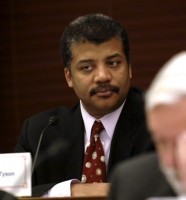 |
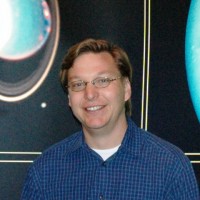 |
|
| Neil deGrasse Tyson (1958- ) Nationality: American Known for: Reclassified Pluto as a dwarf planet Tyson has published several popular books about astronomy, including a book about Pluto’s demotion as a planet and a book about black holes. He has also been awarded prestigious awards from NASA and prominent universities and made several TV appearances to talk about his work. |
Mike Brown (1965- ) Nationality: American Known for: Helped discover Eris, a dwarf planet Brown is credited as the person who is responsible for downgrading Pluto from a planet to a dwarf planet. In 2006, he was listed as one of Time Magazine’s 100 Most Influential People. |
Written by: Chad A. Hagy